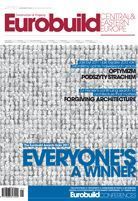Three years of cooperation and a national debut in December 2011 - the first Meeting Point Stop Café in Poland, a new concept from the fuel giant designed by Kaniewski Haute Design. "I had a lot of work in Gdańsk once, somewhere near ul. Grunwaldzka. There was nowhere nearby that I liked to go for coffee or a chat, so I decided to open one myself," is Janusz Kaniewski's jocular account of how this came about. However, the president of PKN Orlen provides us with his own version of events: "We adopted a strategy for the consistent development of our non-fuel offer, turning our petrol stations into something more than just places where you can buy fuel. The café in Gdańsk is the fruit of this strategy," explains Jacek Krawiec.
Inspired by movementThe choice of Janusz Kaniewski and his team as designers was no accident. "We clearly shared a passion for motoring," says the designer. Despite this common interest, the enterprise is a challenge for him for a number of reasons.






























































